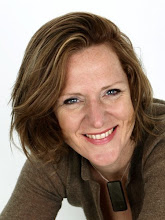PHYSIOTHERAPY FOR CHILDREN & BABIES
CHILDREN, like adults, can suffer from aches and pains.
They may complain of painful problems such as knee, hip, heel, foot or ankle pain which could be Osgood Schlatter’s Disease, Sinding-Larsen Johansson syndrome or Sever’s disease.
They may have problems with their upper limbs, back or neck pain which could be due to scoliosis, kyphosis, poor posture or poor core stability.
Post Surgery Injury:
Following orthopaedic surgery or any type of musculoskeletal injury, particularly sports injuries physiotherapy can also be helpful for children,
BABIES & TODDLERS:
Babies can need physiotherapy for many different conditions. These include positional talipes (mild club foot), hip conditions such as developmental hip dysplasia, developmental delay (eg. late walking), Torticollis and Plagiocephaly (flat head syndrome) - If a baby has a preference to turn it’s head to one side, this can indicate a tightening in the neck muscles on one side which in turn can cause plagiocephaly. If left untreated this can become quite marked. Babies generally do not grow out of these two conditions, and would benefit from positioning and stretching techniques and advice to normalise head position and shape.
In toddlers, some common parental concerns can include flat feet, in-toeing or out-toeing gait, knock knees or bowed legs. A paediatric physiotherapist can fully assess whether these complaints are within normal limits, can advise on preventative measures and sometimes teach child friendly exercises in order to improve things.
Tip toe walking is not normal, and very often children that tip toe do not grow out of it without the correct help and advice. It is quite important to determine whether there is an underlying cause for toe walking (which is rare) or whether it is purely habitual. In the latter case, physiotherapy can be very effective.
So, if you have a child complaining of pain, have any concerns about your child’s walking or leg position, or are worried about something your baby is or isn’t doing, give us call and Emma Harding, our paediatric physiotherapist will be happy to help.

